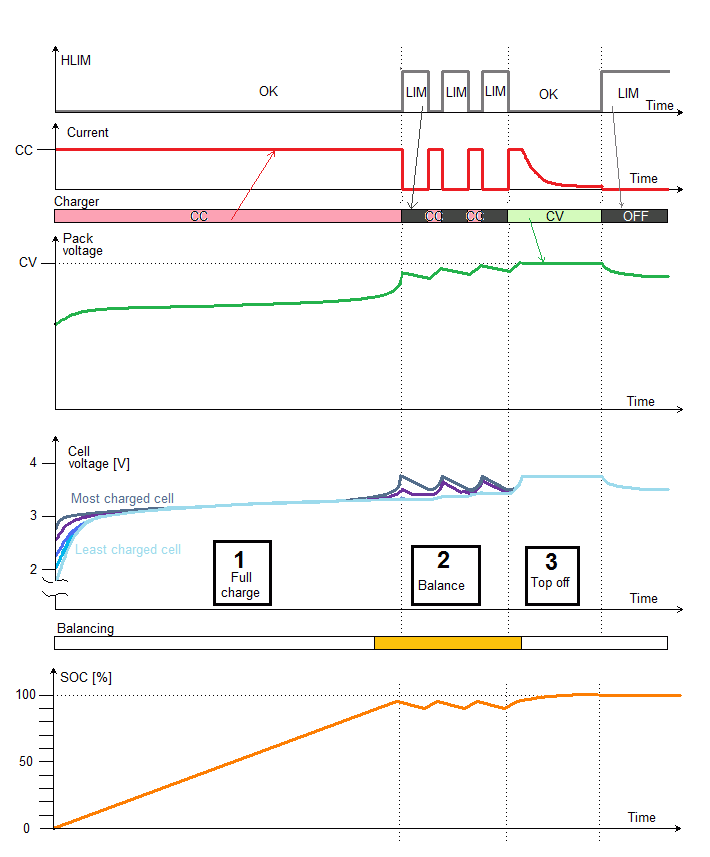
Lithiumate™ Manual |
|
Plan - Charger Selecting and setting a charger to work with an Elithion Lithiumate™ BMS 
When using a charger to operate in conjunction with a BMS, the criteria for selecting a charger and setting it up are different than doing so without a BMS; as a matter of fact, it is easier. Many chargers come with a profile for a particular type of battery. One would think that a charger specifically designed for a Li-Ion battery would be ideal. Maybe. The reality is that the BMS is more able to know when to charge the battery (because it knows the voltage of each cell) than the charger (which only knows the total voltage). If both the charger and the BMS compete on controlling the charging process, neither wins:
There are 2 approaches to selecting and setting a charger:
(Note that, in either case, the smarts of a smart charger are defeated.) Each approach has its advantages
Our recommendation is #1: save your money, and get a dumb CCCV charger, and let the BMS do the thinking. Set the Constant Voltage a bit higher than the nominal full charged voltage of the pack (for example. 3.7 V for standard LiFEPO4 cells, 4.3 V for LiPo cells). That way, the charger will not be the limiting factor to a full charge as cell resistance increases with aging. The BMS will still keep individual cell voltages from going too high. And, when the pack is full and balanced, the charging current will still be high enough to end up with short on periods and long off periods for balancing. Yet, should the BMS not be able to turn off the charger, there will be a little bit of protection.
DO NOT DEVISE YOUR OWN CHARGING STRATEGY!
THE BMS MUST BE ABLE TO TURN ON AND OFF THE CHARGER DIRECTLY through its HLIM output.
Fully charging a Li-Ion battery pack with a CCCV (Constant Current / Constant Voltage) charger and a BMS requires three stages
The Constant Voltage of the charger must be set to CV = number of cells in series * max cell voltage. 
Three stages of charging: Full, Balance and Top-off. For more details, please see FIGURE 6.26 and section 6.2.3 of the book Battery Management Systems for Large Lithium-Ion Battery Packs . You can allow the BMS to control the charger in various ways:
If the charger is capable of current control, you may also set up a way for the BMS to tell the charger the maximum allowed current, either through the CCL line or through the CCL data in the standard CAN messages.
| ||
© 2008~2025 Elithion™, LLC. All rights reserved, except where noted by CC mark. Page published on May 07 2024.
The Elithion brand and the 'ə' (upside down 'e') logo are Trademarks of Elithion LLC. Graphic design by morninglori